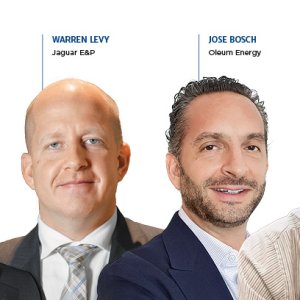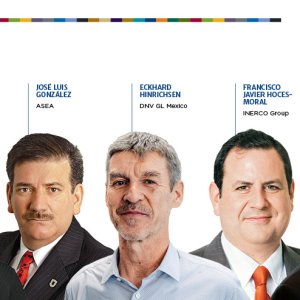
PEMEX’s Ambitions as a Productive Enterprise of the State
Gustavo Hernández said that before talking about PEMEX’s ambitions, we should look at the company’s work regarding its transition into a business-oriented enterprise. “The Energy Reform states that PEMEX has to compete with other oil companies in order to attain exploration areas, associations, migrations and more. We have to invoke the best practices for recruitment, procurement and all of this with competitive salaries.” Hernández admitted that managing a competitive human capital was a difficult area for the NOC, but important advancements are being made in this regard. He said PEMEX’s biggest problems at the moment are the low oil prices and a reduced budget, which makes the company more selective when it comes to investments and pushes PEMEX to look for partnerships. “Since capital expenditure has been changing after the Reform, it is important to take advantage from PEMEX’s competitive production prices that round US$8-9 per barrel. This is a key competitive advantage for the company, and projects that we have been tracing the right track,” Hernández commented.
At the moment, PEMEX is working on the migrations of contracts and establishing partnerships. “After Round Zero, we decided to do farm-outs in 16 blocks so that other companies can assist PEMEX. Some of the players that we had as contractors could now be competitors or partners in future rounds. It will all depend on the objective and the opportunities found during each round,” Hernández detailed.
Hernández then said PEMEX is seeking better-planned operations, which will improve its risk management capabilities, thus maximizing every investment. Part of PEMEX’s strategy is to further develop the deepwater and unconventional segments, which the NOC has not fully seized. Likewise, Hernández said the midstream segment should be given more attention, as it is the gate to materialize production into sales. “After the regulations were set, we have found around a US$100 billion in logistics opportunities,” he admitted.
The speaker invited the audience to keep in mind that the regulation has become stricter and the industry now has new and more competitive players. In this sense, the main topic to address, according to Hernández, is the administration of licenses for exploration and production. “Avoiding practices such as cross-subsidiaries, activity segregation, and multiple reporting is crucial. Different regulators tend to ask for the same information, so CRE, ASEA, and CNH, among others, will have to determine a unified information gathering platform.” Hernández commented that sharing regulatory information to any given entity will expedite procedures and reduce the workload for the parties involved.














